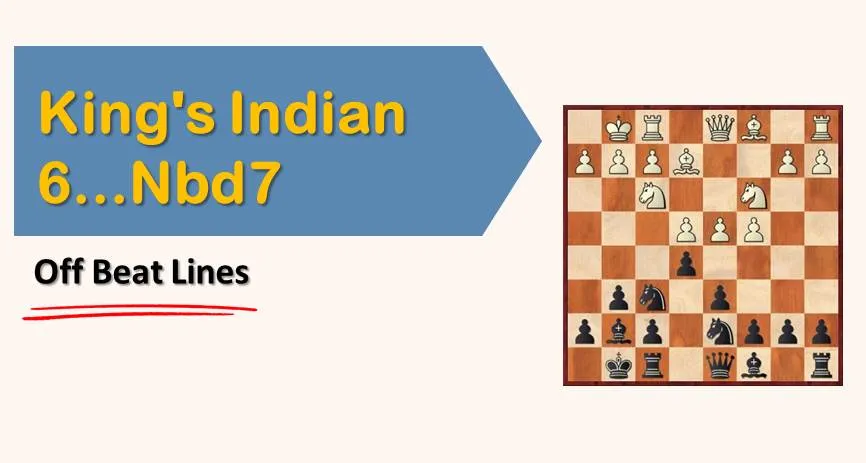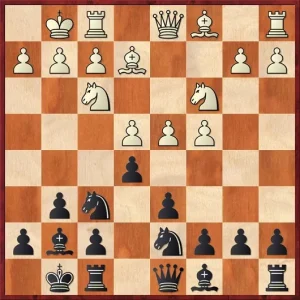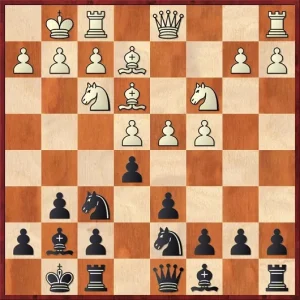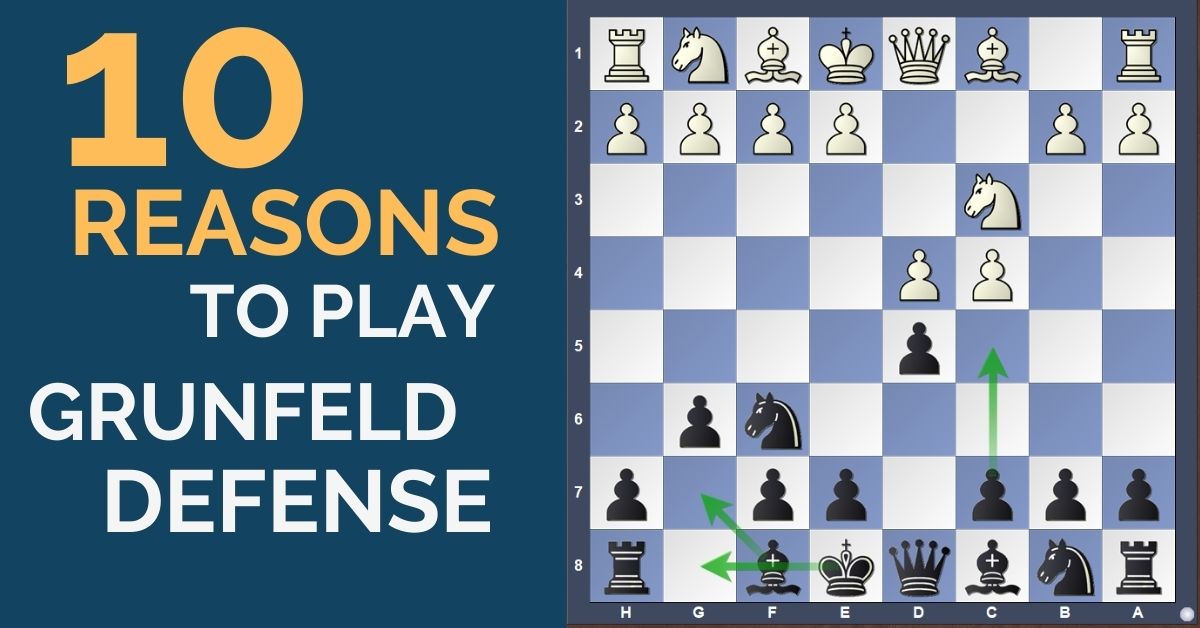Off Beat Lines in the King’s Indian 6…Nbd7

King’s Indian Defense is among the most popular defenses in chess. It offers great chances to the second player to unbalance the game. Nevertheless, the public opinion nowadays (it changes from time to time, like fashion) is that playing the King’s Indian is only an unnecessary risk.
King’s Indian Defense – Introduction
Black can play the Slav or the Nimzo and avoid all the suffering in cramped positions, but this would bring considerably fewer chances to win the game. For every tournament player, it is very important to be unpredictable and have some fighting weapons for crucial moments during competition. These weapons can be openings such as the Blumenfeld Gambit, Benoni, Dutch Defense, and of course the King’s Indian. The latter has the plus that it can be played against white’s 1.c4, 1.Nf3, or 1.d4 while the Benoni and the rest cannot.
Even if these options are theoretically inferior, this doesn’t have to worry you. First of all, your opponent won’t be expecting so it is very unlikely he will remember the right refutation to your system. Even if he does, it doesn’t mean that black is lost, as there is still a hard struggle ahead and you will have your chances. In this article, we are going to see some options in the King’s Indian, different from the mainline. Objectively, they are inferior lines and we don’t recommend them as your main and only weapon.
Tip:
In order to fight blunders, find the right plan in complex positions and improve your positional and tactical vision we recommend you to sign up for our comprehensive training course. Hundreds of chess players already benefited from our training. Don’t wait, start winning chess games today.
However, in this article, we will propose you something different to surprise your opponents and to play it when only a win counts.
Let’s have a look now at the King’s Indian where the knight develops via d7 instead of c6. There are a few positive things about this variation:
- Flexibility – This is one of the key factors. Black can adapt the move order avoiding all the drawish lines (i.e. lines with dxe5 followed by a trade of queens). For example, against 1.d4, black can start by 1…Nf6 2.c4 d6!? Followed by Nbd7 and only then g6-Bg7.
- Tension – The positions arising in the middlegame are usually very rich in possibilities for both sides. The plans aren’t straightforward moves and white needs to maneuver in order to convert his space advantage into something tangible.
Of course, the main drawback of the lines with Nbd7 is that black is considerably less active than with Nc6 and there aren’t any kingside attack actions that the King’s Indian is famous for. Here, black aims for a more solid position from which he can counterattack.
King’s Indian Defense – Theory
1.d4 Nf6 2.c4 d6 (This move order aims to play e5 quickly, avoiding Saemisch and Four Pawns variations of the KID) 3.Nf3 Nbd7 4.Nc3 e5 5.e4 g6 6.Be2 Bg7 7.0-0 0-0

In this position, white can play 8.Re1, 8.d5, and the most dangerous 8.Be3, which is the mainline and the move we will deal with in this article.

After 8.Be3 we’ll focus on the rare move 8…Qe7!?, which was played several times by the Armenian GM Akopian. Black puts pressure on the e4 pawn and leaves white with three options. He can maintain the tension with 9.Qc2, close the center drastically with 9.d5, or take on e5. We will analyze all of these moves in the next three examples:
White plays 9.Qc2 – This is very natural and probably the best. Now, black’s plan is to capture on d4 and play along the dark squares. The control of the squares e5 and c5 plays a very important role, in keeping black’s position together.
White plays 9.d5 – Against this move black is ready to play 9…Ng4 followed by 10…f5 with an active play on the kingside.
White plays 9.dxe5 – “Playing it safe”, but there is no immediate way to force a draw or anything close to it. After capturing on e5 black can still play for f7-f5 and try to complicate things in the center.
Conclusion
If you want to improve your chess level, you need to have a clear study plan. If you aim for a dramatic improvement at chess you need to work on all of the elements of the game in a systematic way:
- tactics
- positional play
- attacking skills
- endgame technique
- classical games analysis
- psychological preparation
- and much more
Want to know more about King’s Indian Defense? Look at 5 Reasons to Play It in Must-Win Situations.
We also recommend reviewing Alekhine Defense: 10 Reasons to Play It as well as 3 Things to Know About Exchanging Pieces.
That seems to be like a lot of things, and that is. But no worries, we have made it easy for you. Our comprehensive training course covers it all and much more. Sign up for 21 Day Training right now!










Comments: